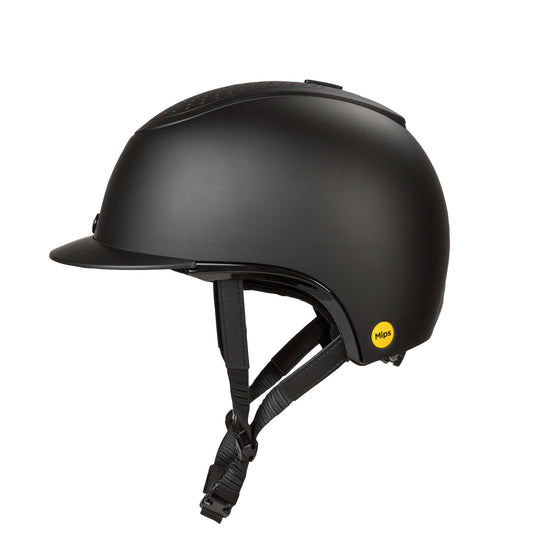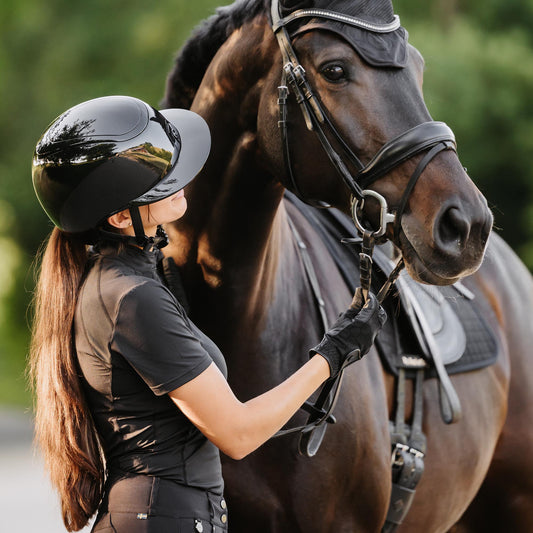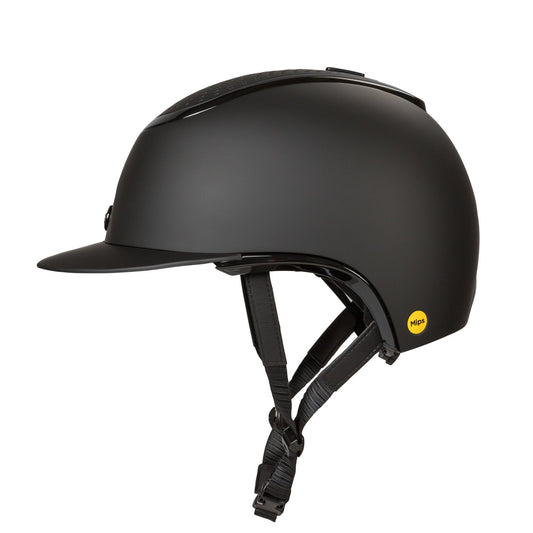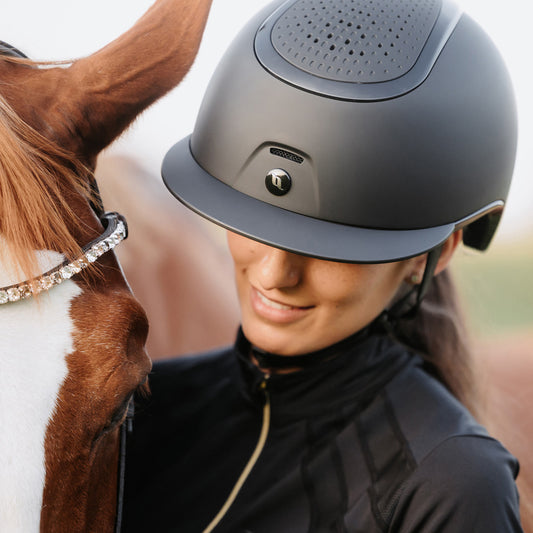The right size and fit of a riding helmet
When trying out a new riding helmet, there are a lot of things to keep in mind. That's why we've created a simple guide to help you find the right helmet for you.
Consider the shape of your head
A great fit will provide the highest possible safety.
As every person has a unique head shape, some helmet models may fit better than others. It is always best to try on different models and feel which one fits right. The adjustment wheel system in Back on Track's helmets allows for some customisation to different head shapes as well as fine-tuning of the fit.
Study the shape of your head; ‘Round, oval or in-between’ are not exact terms, but a simple estimate can still guide you in choosing a helmet model.
Round head shape
Characteristics: The head is about as wide as it is long.
Fit tip: Choose a helmet designed for rounder heads. These models often offer more room on the sides and an evenly rounded fit around the head.
Intermediate head shape
Characteristics: The head has a rounded shape but is slightly longer than it is wide.
Fit tip: Most standard helmets are designed for this head shape, which usually makes it easier to find a helmet that fits well. Try some on and compare.
Oval head shape
Characteristics: The head is longer than it is wide, with a narrower forehead.
Fit tip: Choose a helmet designed for oval heads. These models are longer at the front and back, and narrower at the sides.
How to choose the right helmet size
To know which helmet size to choose, start by measuring the circumference of your head. Measure just above your eyebrows. This measurement indicates the size of helmet you should wear: the helmet size is the same as the circumference measurement.

How should the riding helmet fit?
A riding helmet with a perfect fit should sit comfortably on your head without pressing anywhere. The helmet should stay firmly in place when you move, and the chinstrap should fit snugly under your chin. If the helmet presses on the side of your head and forehead, you need a helmet that is more oval in shape. If you feel that the helmet doesn't really come down on your head and that it doesn't sit firmly, you probably need a helmet with a rounder shape.
Once you've found the right shape and size of riding helmet, you should check the fit. This is easily done using a ‘stay-tight’ test:
- Stand in front of a mirror and place both hands on the helmet.
- Gently rock the helmet forwards and backwards.
If the helmet fits properly, the skin on your forehead will follow the helmet when you wiggle it. If the helmet moves and the skin stays still, the helmet is probably too big, or you have a helmet that is too oval for your head shape.
There is another way to check if your helmet fits properly: the traditional ‘shake test’. This is easily done by shaking your head up and down with the chin strap unbuttoned. If the helmet stays in place, the helmet fits well. If it falls off, the helmet is probably too big.
Adjust the fit using liners
Our riding helmets have slightly different shapes so that everyone can find a model that fits. For example, some models fit better on people with a rounder head. We have a wide range of inner liners in different thicknesses that allow the size and shape of the helmet to be customised. All inner liners are easy to change and replace as they are attached to the helmet by means of hook & loop straps.
Fine-tune: Back on Track's helmets have an adjustment wheel system that allows you to further fine-tune the fit.
Fit of the chinstrap
The chinstrap should be tight and properly positioned under the chin. It should not slide forward on the chin but should be tightened so that it remains still. The strap fits well when you can fit one or two fingers between your chin and the chin strap. All our helmets have a small triangle at the end of the chinstrap that allows for adjustment, so it sits well under your chin.

A riding helmet to grow into?
Changing helmets as children grow can be costly. For this reason, you may want to consider an adjustable helmet, which allows for some customisation to a growing head. However, the most important thing is that the helmet fits well here and now. The choice of size should never be at the expense of safety.
Riding with your hair inside the helmet?
If you want to ride with your hair inside the helmet, it is important to keep this in mind when trying out your riding helmet. Sometimes you may need to go up a size to fit your hair - and if you ever choose not to wear your hair inside your helmet, it may be too big. In this case, we recommend choosing an adjustable helmet so you can adapt it to how you want your hair.












